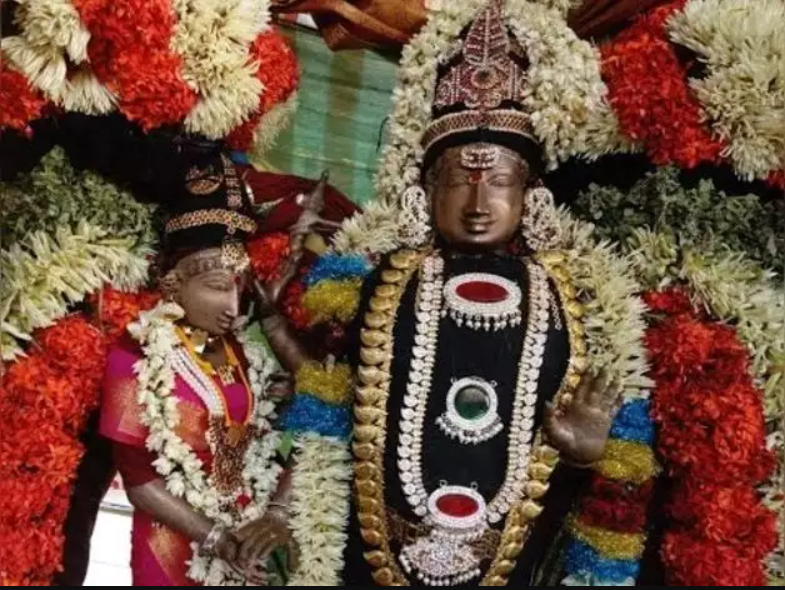
Late Marriage? Separated from Spouse?
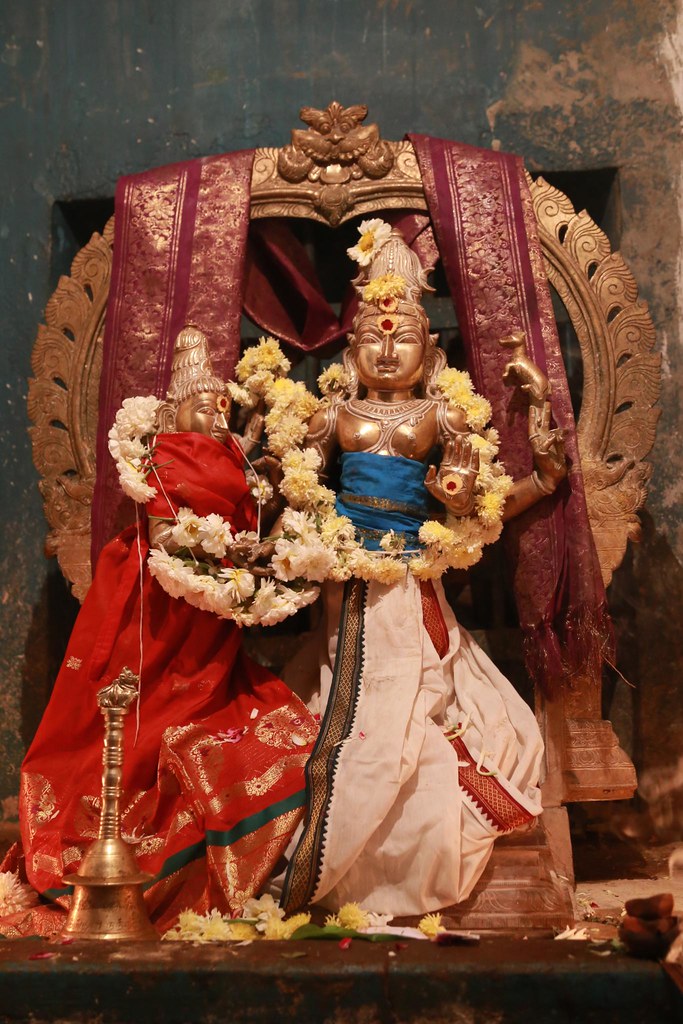
Lord Udhvaganathar (Lord Shiva) and Gokhila Amman (Parvathi) residing at Thirumanancheri Temple Remove Obstructions and Delays in Marriage and Reunite Separated Couples…
The presence of divinity can be felt more in some temples than in others. The Kalyana Sundareswarar temple in Thirumanancheri is believed to be one of the shrines that is especially blessed with divinity. This has been the experience of thousands of devotees when it comes to being blessed with early and successful marriages.
Thirumanancheri is a village located near the Kaveri River in the Nagapattinam district of Tamil Nadu.
Why do people flock to this 1000-year-old temple?
Mr Rajaram from Pune had a concern. His well-educated and employed daughter, Malini, could get no suitors, as none of the horoscopes were matching. Those that matched did not go further, as the boys changed their minds, or some families asked for non-working girls. Countless visits to his astrologers did not yield any hope. One day, he heard about Thirumanancheri. A visit to the Kalyana Sundareswarar temple changed everything in his family – for the better. Malini got a matching proposal from a US-based scientist from the same community, within a month of praying to Shiva and Parvathi at the temple.
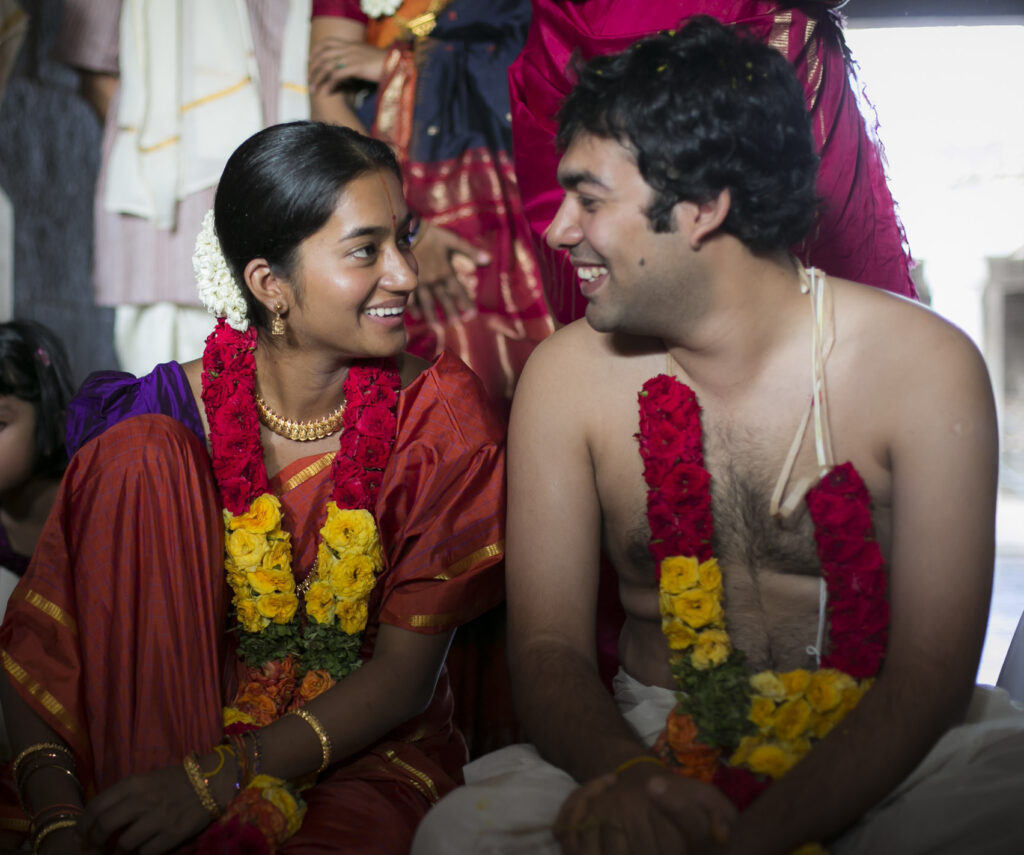
Mrs Shankari from Bangalore was getting frustrated at the delay of her daughter’s marriage. The girl was saying NO to every groom and was not communicative about her problem. Both her parents prayed daily to all the Gods, to shower “budhi” and wisdom on their daughter, but to no avail. A chance visit to Kumbakonam, led them to Thirumamancheri. They managed to persuade their reticent daughter to undergo a “marriage” pooja at the Kalyana Sundareswarar temple. As willed by the Lord, three “cases” came up very quickly at Bangalore. One of the boys was from Bangalore.
The Legend of Thirumanancheri
Parvathi wanted to marry Shiva, and no one else. After an intense meditation, her prayers were answered. The place of her meditation came to be known as “Thirumanancheri,” after the divine marriage took place. In Tamil, “thirumanan” means “marriage.” “Cheri” means a village. Thus Thirumanancheri refers to the location where marriages take place. Shiva, in the form of “Kalyanasundareswarar” married Parvathi, addressed as “Kokilambal” here. In Sanskrit, “Kalyanam” refers to marriage and Kokila refers to the nightingale bird. Lord Shiva is also known as “Udhavaganathar” in Sanskrit. Together, the divine couple is addressed as ‘Arul Vallal’ and ‘Kuyilinmenmozhiammai’, where the word “kuyil” means the nightingale and the patron of beautiful birds. The Goddess is also called Parvathasundari. Thus the Kalyanasundareswarar temple is also known as Udhavaganathar temple.
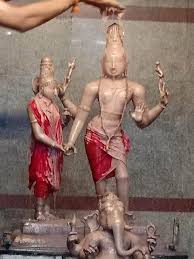
Corresponding to one legend, Shiva and Parvathi once had a celestial fight while playing dice. In a fit of temperamental fury, Shiva transformed His wife into a cow. Predictably, He began to repent and sought Mahavishnu’s help to regain Goddess Parvathi’s feminine form. Vishnu assumed the form of a cowherd to take safeguard His “sister.” He then released the curse at a place named “Thiruvaduthurai.” Parvathi took a bath in the Kaveri river and began to live as Bharatha Muni’s daughter in this location. The muni later presented the girl to Lord Shiva. The Lord happily asked for her hand in marriage again, at the place now known as “Thirumanancheri.”
As another legend, it transpires that Mount Kailasam became imbalanced during the supremely grand wedding of Shiva and Parvathi. Millions of visitors thronged this abode. To resurrect the balance, Shiva sent Agasthya rishi earthwards to the south, and installed a lingam of the Lord, for others to pray. Agasthya rishi installed a lingam and began to pray to Shiva from the location, now known as Thirumanancheri. Periodic modifications at the location, by Shiva bhakthas, is what we witness today as Kalyanasundareswarar and Kokilambal at the Udhavaganathar temple.
There is another belief. Two women of yore promised each other that their son and daughter would marry each other, when mature. However, one of the women gave birth to a turtle-shaped boy. The girl’s mother wriggled out of the marriage pact. Disappointed, but determined, the boy’s mother prayed to Shiva, for deliverance. The Lord, hearing her prayers, transformed the turtle boy into a handsome young man, and the other woman changed her mind. Their marriage happened at Thirumanancheri. Thus it is believed that even physically challenged people will get suitable matches, with the Lord’s blessings. Furthermore, such disabilities tend to get ignored if you pray at Thirumanancheri. Two hearts beat as one, ignoring the physical aspects.
Priest talking about the greatness of Thirumanancheri Temple
Prayers for early marriage and prayers for a happy and peaceful married life
The temple is a boon for those lonely hearts, not getting married for whatever reasons. This might include issues with one’s star (nakshathram). It is said that people born under certain nakshatrams such as Moolam, Aayilyam (Ashlesha) and Kettai (Jyeshta) need a substantial propitiation to some deities, to be eligible for marriage. A visit to this temple, by the one who is unable to get married, will soon find oneself sailing in happier waters, after the due poojas. After the marriage, the newly married couple must visit this temple together and dispose of the prasadam (religious offerings) at the temple pond.
The belief is so strong that people from far and wide, visit the shrine of Shiva and Goddess Parvathi, to take their blessings and get married. In fact, this practice is said to have originated by Manmathan himself. Manmathan, or the God of Love, aimed one of his love flower arrows when the Lord was in profound prayer. Disturbed from His meditation, Shiva got furious and opened His third eye and turned Manmathan into ash. A very inconsolable Rati fell at Shiva’s feet, begging for pardon and reprieve. Shiva relented and gave human life back to Manmathan. He also gave “Mangalya Pichai” to Rati, and united the cupid couple. Since then, Manmathan is said to have prayed to Shiva at this site.

At the temple, Udhvaganathar looks on as a groom in this moolashtanam and Ambal is His divine consort. Together, they appear like a newly married couple.
The temple was built by Sembiyanman Devi from the Chola dynasty. It is one of the shrines of the 275 Paadal Petra Sthalams – Shiva Sthalams glorified in the early medieval Tevaram poems by Tamil Shivite Nayanars Tirugnanasambandar and Tirunavukkarasar.
Location of the Kalyana Sundareswarar temple
Thirumanancheri is accessible from the railway stations at Kuttralam, Mayiladuthurai, and Kumbakonam. There are also several buses from Kuttralam and Mayiladuthurai.
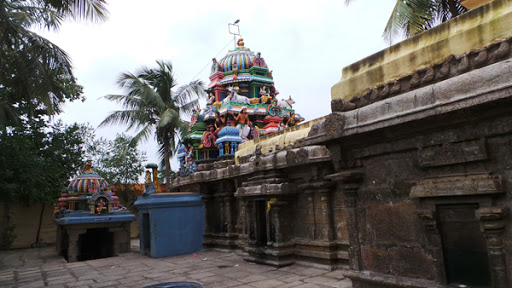
Tiruchirapalli is the nearest airport.
You can reach Thirumanancheri from these major locations, by road or train:
- Mysore, 448 kms
- Bangalore, 413 kms
- Vellore, 253 kms
- Chennai, 269 kms
- Pondicherry, 123 kms
- Tiruchirapalli, 141 kms
- Erode, 248 kms
- Salem, 208 kms
- Namakkal, 192 kms
- Madurai, 246 kms
- Karur, 183 kms
- Coimbatore, 315 kms
- Kochi, 454 kms
The best time to visit Thirumanancheri is between October and March, considering the temperature during the rest of the year.
The priest performs marriage poojas between 8:00AM and 1:00PM and from 3.30PM to 8.30PM from Monday to Friday, and from 7:00AM to 9:00PM on Saturdays and Sundays. On Kalyana muhurtham days, there can be more than 1500 visitors, with batches of 120 devotees each. On average, each pooja batch takes an hour or so, to accomplish.
Any time of the day is considered auspicious at this temple, as the divine couple is always known to be in a state of bliss. In fact, this is one of the rarest of temples that observes no Rahu kalam, Yamakandam, Kuligai kalam, Ashtami, Navami etc.
There is a belief that during “thei pirai” there are no Kalyana muhurthams. The period from the tithis of Pournami to Amavasai is referred to as “thei pirai” or Krishna Paksam. ‘Thei’ roughly translates to “erode” in Tamil. It indicates that during the period, the moon diminishes in size and no marriage prayers should be conducted at the Thirumanancheri temple. However, this is only a fallacy. The temple accepts poojas on all days of the year.
Offerings at the temple
Six poojas are done daily at the temple – Ushakkalam, Kalai Santhi, Uchikalam Sayaratchai, Irandam Kalam, and Artha Jamam. Weekly poojas are also conducted including Sahasranamam and Lalitha Thiruchathi archanas on Tuesdays and Fridays.
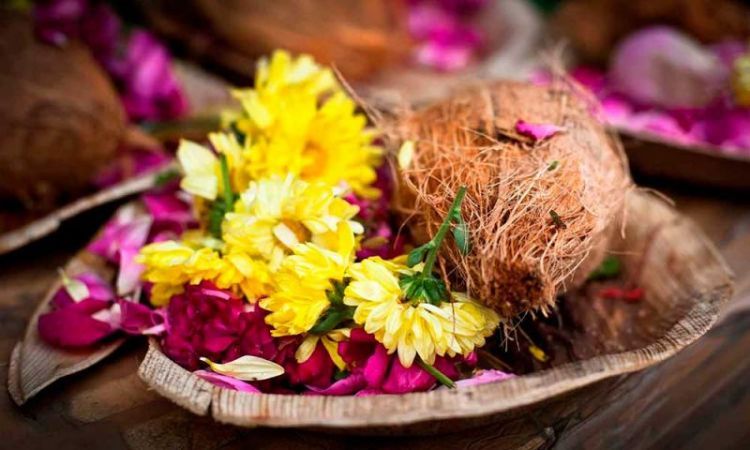
Special days at this temple include the first day of every Tamil month –“Karthigai.”
Dedicated poojas are held during “Pradosham” and “Sangadahara Chathurthi” in addition to Nakshatra Pooja. This pooja is performed to reduce the ill effects of the Nakshatram, under whose influence one is born.
Additionally, you can avail of special poojas at Thirumanancheri, on a few selected days. These offerings include:
- Milk payasam to Mangala Rahu for Putra bhagyam (progeny) on every Amavasai day.
- Abhisegham on the first day of every Tamil month, during pradosham. Pradosham is a fortnightly occurrence in the Hindu calendar. The time of an hour and a half before and after sunset, (three hours in all) is considered auspicious to worship Shiva.
- Abhishegam and Umamaheshwara homam on Sankatahara chathurthi and days of Poosa nakshathram.
Special homams at the temple
You can perform these homams at the temple:
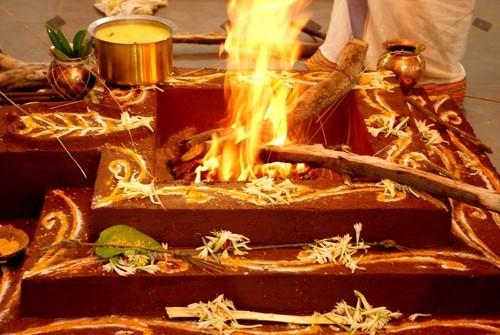
- Swayamvara Kala Parvathi homam, to remove hurdles and obstacles that are in the way of one’s marriage.
- Uma Maheshwara homam, to remove hurdles and obstacles that are in the way of husband and wife relationships. It is believed that the homam can preempt divorces or estrangements.
- Poosa Nakshathra homam, to remove hurdles and obstacles that are in the way of one’s life. The temple performs the homam on the day of Poosa nakshathram, every month. It is believed that the performance of the homam bestows success, not only for marriage but also for material benefits, education, health and careers.
Other festivities at the temple
The temple celebrates the three-day Chithirai wedding festival of the divine couple during April-May, lending a grand atmosphere to the vicinity. There is a large influx of devotees during Pradosham days of each month as well as during the Aadi season. Aadi is the fourth month of the Tamil year and the first day of this month, usually falling on July 16, is celebrated as “Aadi Pandigai” or Aadi Pirappu, and is celebrated across Tamil Nadu, particularly by newly marrieds. However, there is a belief that the month of “Aadi” is not ideal for marriages. Therefore, some devotees do not visit Thirumanancheri during this time.
Another major occasion at the temple is during “Thiruvadhirai” which falls during December-January. Thiruvathirai (Arudhra) in Tamil means “sacred big wave.” It is believed that on this day, Shiva created the universe, trillions of years ago. The day is also celebrated as Shiva’s birthday.
Regular festivals of Navarathri, Vijayadasami, Thirukkarthigai, and Aruda Dharshanam are conducted on a grand scale here.
Nine easy steps to the temple
- You can park your vehicle in front of the gopuram on normal days. You may not be so lucky during the weekends!
- Leave your footwear in the car itself, if possible.
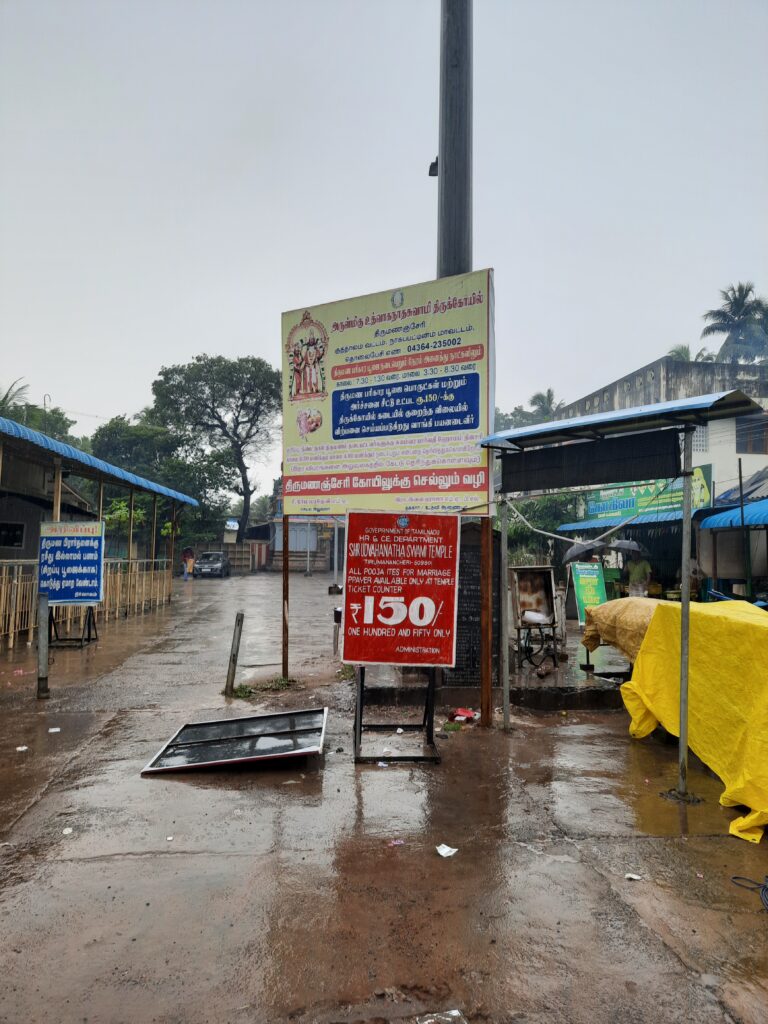
- Buy the archana set inside the temple, including clay lamps and ghee, to avoid getting deceived by outside vendors. If possible, take the original ghee from home since the ghee sold there may be hydrogenated vegetable oils.
- Buy archana tickets inside the temple at the counter. Separate rates apply for marriage prayer, puthra dosham and regular visits.
- As you enter the temple, look to the left of the sanctorum. Selva Ganapathy is seated there. Offer your prayers to Him first.
- Pray to Shiva and then go to Amman Sannithi on the right. Meenakshi Amman here appears as a teenage Kokilambal.
- Move to the left of this mandapam, to witness the Kalyana Sundareswarar sannithi and mandapam.
- Light the ghee lamps first, in front of this idol. The deities are in a marriage kolam (rangoli or intricate designs on the floor) Meenakshi is on the Lord’s right, with head bowed to the floor in modesty. Therefore, it is a common practice for married girls to emulate the divine couple. Women must stand on the right side of their husbands, for all poojas and religious gatherings. Only prospective grooms and brides are allowed beyond this point, to perform the poojas in batches. Others accompanying them should wait outside.
- Inform the priest if you are doing a proxy pooja- parents on behalf of their sons or daughters.
We advise you to be cautious while dealing with flower and garland vendors, at the entrance of the Thirumanancheri temple. You can either bargain for a good rate or prefer to buy your requirements from inside the temple premises.
The pooja proceedings
You can see prospective brides and grooms, seated in batches and you can join the appropriate group. Married couples, also frequent the temple, from time to time, to offer their thanksgiving to Shiva. The main priest begins with a sankalpam, before the rituals begin. Sankalpam is a procedure to blend the mind and body, before a pooja or offering.
As you will see, the idol of Kalyanasundareswar is the bridegroom and blessing the devotees. Goddess Kokilambal is seen bowing her head in modesty, to her Lord. Together, the divine couple is in a posture that typified blessings to the visitor.
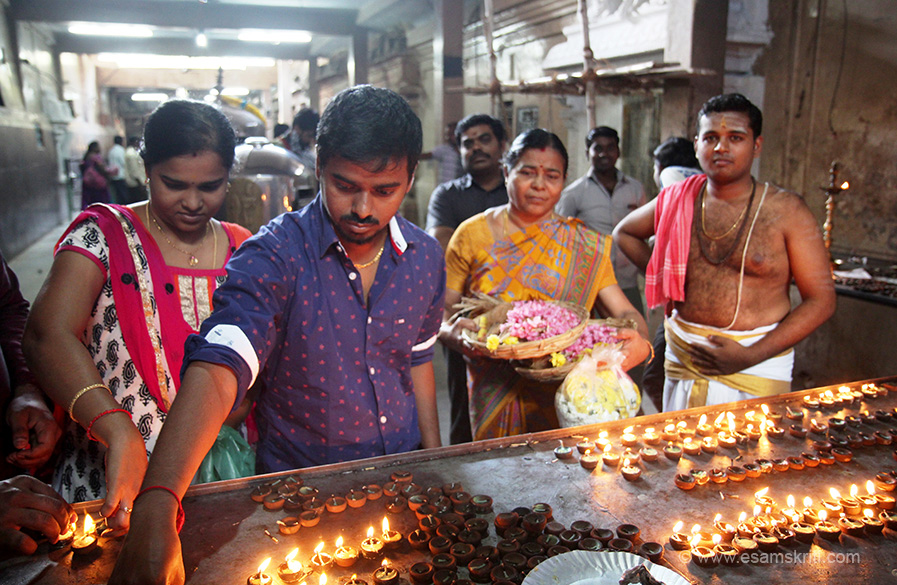
It is also believed that married couples, who have been separated or estranged for whatever reasons, may visit Thirumanancheri, to re-establish their relationships and seek His blessings for unity. A special pooja is conducted for such couples.
After the round of poojas on the first occasion, preserve the garland offered to you, within your pooja room, or prayer area. As soon as your marriage proposal is activated, dedicate the garland to Thirumanancheri. After your marriage, revisit the temple to seek divine blessings again and gently slide your garland into the temple pond.
A typical offering comprises two garlands, two coconuts, turmeric, kumkum, camphor, plantains, betel leaves and areca nut, a lemon and jaggery, for both men and women. Preserve the lemon after your pooja and the next day, after a bath, put on your garland. Then squeeze the lemon to drink its juice, without sugar or salt. Others should not drink this juice-only the unmarried. However, you can use the coconut halves for cooking for the entire family.
As an unmarried girl, you can preserve the vibhuti, kumkum and turmeric for one full mandalam (45 days) or even beyond. Others should not apply these.
Married couples may refrain from consuming non-vegetarian food, for one Mandalam, as a practice. You might want to get this confirmed by the priest.
There may be occasions when prospective grooms and bridegrooms are unable to visit Thirumanancheri, in person-for example, those living abroad. In such cases, their parents or close family can visit the temple by proxy and perform the required rituals. The priest will chant a special sankalpam, dedicated to the unmarried. It is important to remember/know the gothrams of the concerned boy or girl!
Those afflicted with Mangala (Rahu) dosham, can pray to Mangala Rahu to the north of the inner praharam.
Rahu dosham
Whenever there is a Mangal Rahu or Surya Mangal Dosha manifested in a horoscope, a Mangala pooja has to be performed. A Mangal Rahu / Surya Mangal Dosha is also known as “Angarak Yoga” in a horoscope and it is formed when the planets Mangal (Mars) and Rahu or planets Surya and Mangal are located in the same house.
Puthra dosham
Childless couples can perform the puthra dosham pooja in an adjacent location. For this pooja, take a bath in the temple tank on an Amavasai day and bring milk payasam as the offering, in addition to ghee. The priest returns the prasadam. The couple must partake of this prasadam for 48 days in a row, to attain maximum benefit.
General Information
- It is advisable to carry your own food, as the temple surroundings do not offer much.
- There are no proper restrooms in this area.
- There is no accommodation available around the temple. You must be ready to leave for a better-equipped destination, after your pooja.
- You can wear any apparel – pants, dhotis, shirts, saree, chudidhar etc. except shorts, lungis and night dresses. Unlike some of the Kerala temples, you do not get dhotis on short-term hire around the temple premises.
- The nearest hospitals are at Mayiladuthurai and Kumbakonam.
- There is no transport, other than town buses. Cabs ply from outside and in a return mode.
- The nearest hotel is in Mayiladuthurai (formerly known as Mayavaram and Mayuram)
- You can carry your mobiles to the temple but switch them off, during the proceedings.
- There is no Kalyana mandapam in the vicinity.
- Do not hire a guide here – most of the activities and procedures are easily apparent.
Navagraha temples around Thirumanancheri
We recommend you also visit the following Navagraha temples that are situated around Thirumanancheri.
| Navagraha | Location |
| Sooryan | Sooryanar temple around Mayiladuthurai |
| Chandran | Kanjanur temple, two kilometres from the Sooryanar temple |
| Chevvai (Cheuvva) | Vaitheeswaran temple on the Seerghazi Mayiladuthurai road |
| Budhan | Thiruvalangadu temple on the Seerghazi Poompuhar road |
| Guru | Alangudi temple, on the Kumbakonam Mannargudi road |
| Shukran | Thirunallar temple, five kilometres from Karaikal |
| Shani | Thirunallar temple, five kilometers from Karaikal |
| Rahu | Thirunageswaram temple on the Kumbakonam Karaikal road |
| Ketu | Perumpallam/ Vaanigiri on the Mayiladuthurai Poompuhar road |
Order Puja Now..
If you are trying to find a suitable marriage partner or trying to find peace and happiness in your marriage or trying to get reunited with your spouse then do visit the temple for puja. If you cannot do that you can order a puja through this website.